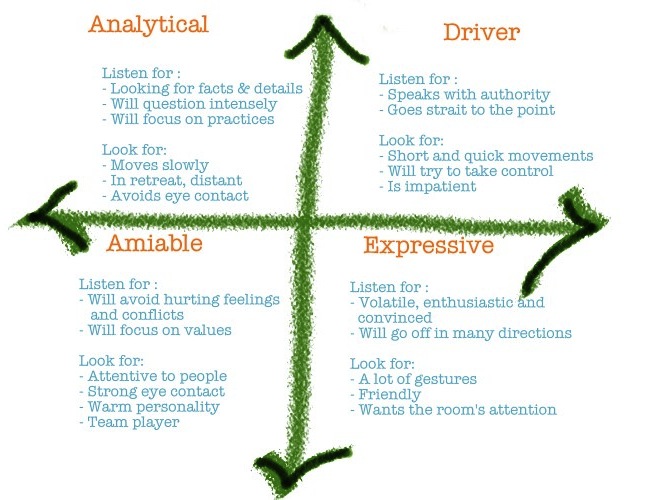
Technical and supportive interaction manifests as the degree to which a supplies ideas to others.Unless you are an artist who never wants to sell your work or an author who writes only for yourself, you have to deal with people. They be the gravity force in a team, provide inspiration and form personal bonds.Įmotional styles are the Expressives, enthusiastically looking ahead, familiar with others and quick to communicate. This style responds to timely follow-up, attentive listening, evidence and factual support, and solutions that reflect an understanding of the Drivers goals, all of which the Driver values over making time to crate personal relationships. German mauser 98 serial numbersĪppearing to be controlling, knowledgeable, forceful, strong-minded and self-confident, the Driver has clear objectives which often seem to create a sense of urgency.


They are result-oriented, assertive, independent and may place holding form over subjects.Īssertiveness and dominance manifests as the degree to which a person is attempts to influence the thinking and actions of others. Other studies that support four-style model include The Four Ego Functions as described by Carl Jung, and the Myers-Briggs Personality Tests that devrived from it, (these and other relative models can be found in Chapter 4. Reid who identified the four basic Interpersonal Styles of behavior as. The six-style Hex model indentifies Styles, old and new, as: Driver Expressive Analytical Facilitator Organizer Amiable. This is not to suggest that the existing four-style models are anything less than excellent and useful, it is only intended as an enhancement.Ĭonsequently, The Hex Model is more complex, but it is more telling. The better we understand the transcending elements, the better we can construct out models of behavior.ĭavid Katzmire, is an expansion of existing four-styles models to introduce two Interpersonal styles, the Facilitator and the Organizer.ĭesigned to fill what this author perceives as missing parts of the puzzle, it completes the identification of Physical, Emotional and Intellectual energy patterns, and their combinations to define six discernable styles of behavior. These underlying patterns within us may recapitulate dynamic patterns that are found throughout nature and reflected in the change seasons and the patterns of stars.


These energies that are common to us all are just used differently based on our preferences and tendencies. This belief is built from the archetypes of behavior are based on dynamic elements of Physical, Emotional and Intellectual energies, and their cominations of Physo-Emotional, Physo-Intellectual, and Emot-Intellectual Energies energies manifest in six types of behavior.


 0 kommentar(er)
0 kommentar(er)
